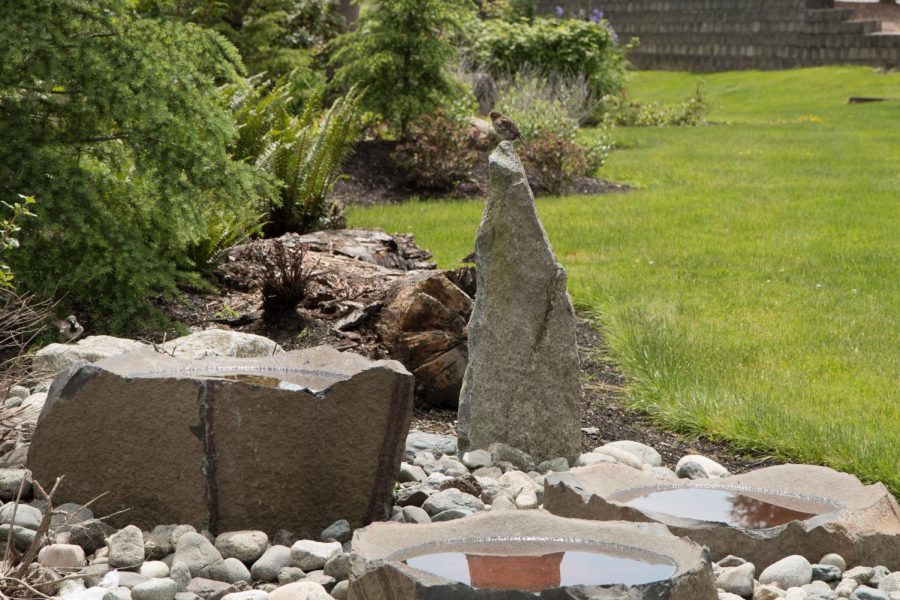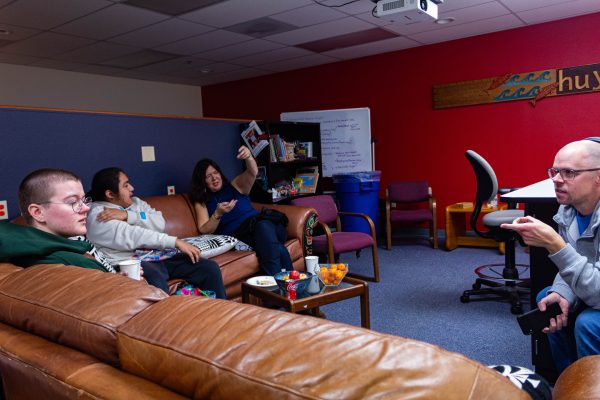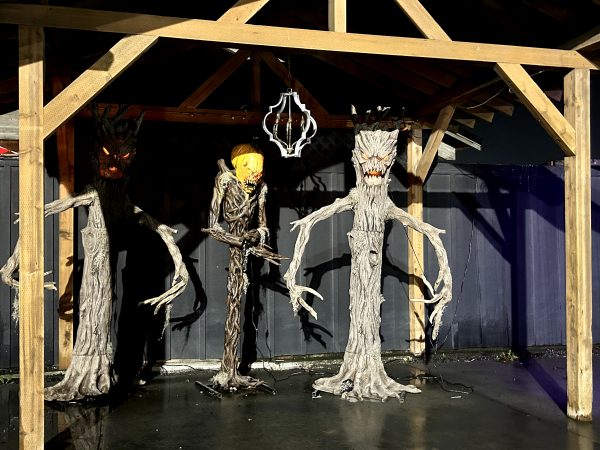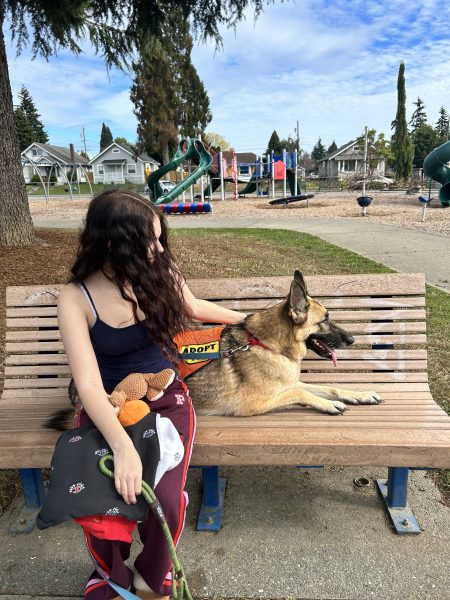For the Birds: EvCC’s New Campus Habitat Welcomes Feathered Friends
The bird habitat is one of the newest landscaping projects on the campus, built earlier this year. Spanning most of the length of Index hall, the habitat has many features to make the campus more inviting for birds.
There is a dead tree in the middle of the EvCC campus. John Syson, head of campus landscaping, put it there to bring more life to the campus as part of a bird habitat. “On campus, what is really truly alive?” asks Syson. “Well, we know the students, staff and visitors are a given. We know that somewhere in a lab there’s a petri dish with something alive in it. The rest is all brick and mortar. And that’s where landscaping takes it from an institution and turns it into a home.” But Syson admits that he may be slightly biased.
The bird habitat is one of the newest landscaping projects on the campus, built earlier this year. Spanning most of the length of Index hall, the habitat has many features to make the campus more inviting for birds. “I planted plants specifically to attract birds,” said Syson. Some of the plants currently in the garden are flowering currants, sword ferns, vine maple, mountain hemlock and salal, which is a native berry plant.

John Syson has been at EvCC for ten years and hopes to expand the bird habitat after Index Hall is torn down.
Bringing birds to the campus has a few benefits. “There’s a chain reaction,” said Syson. The birds feed on insects, which helps reduces predatory insects around campus, and the birds act as pollinators for plants both on and around the campus. “Plus they also bring joy to the campus,” said Syson.
The dead standing tree that stands as the tallest feature of the garden was part of Syson’s designs for the garden.
“There are two reasons,” said Syson about the dead tree, “If you study birds you’ll notice that when one is feeding, there are other ones watching for predators. And what they’ll do is they’ll swap, one will come down to the bird bath and the other one looks up,” said Syson. The habitat has the birdbath, and the tree gives the birds a perch to watch for predators from.
The second reason is to attract those very same predators, “You’ve got to look at what’s at the top of that [dead tree] because the birds of prey sit up at the very top,” said Syson.

A variety of birds are flocking to the site of the habitat.
After explaining this to a Pilchuck Audubon Society(PAS) member that was going over the plan, “He looked at me like, ‘You’re evil,’” said Syson.
The PAS helped found the garden with the goal to reduce the amount of grass on the campus. “Grass carries no ecosystem unless you consider worms,” said Syson. Lawns also consume a lot of campus resources, “They require a lot of fertilizer and a lot of water.”
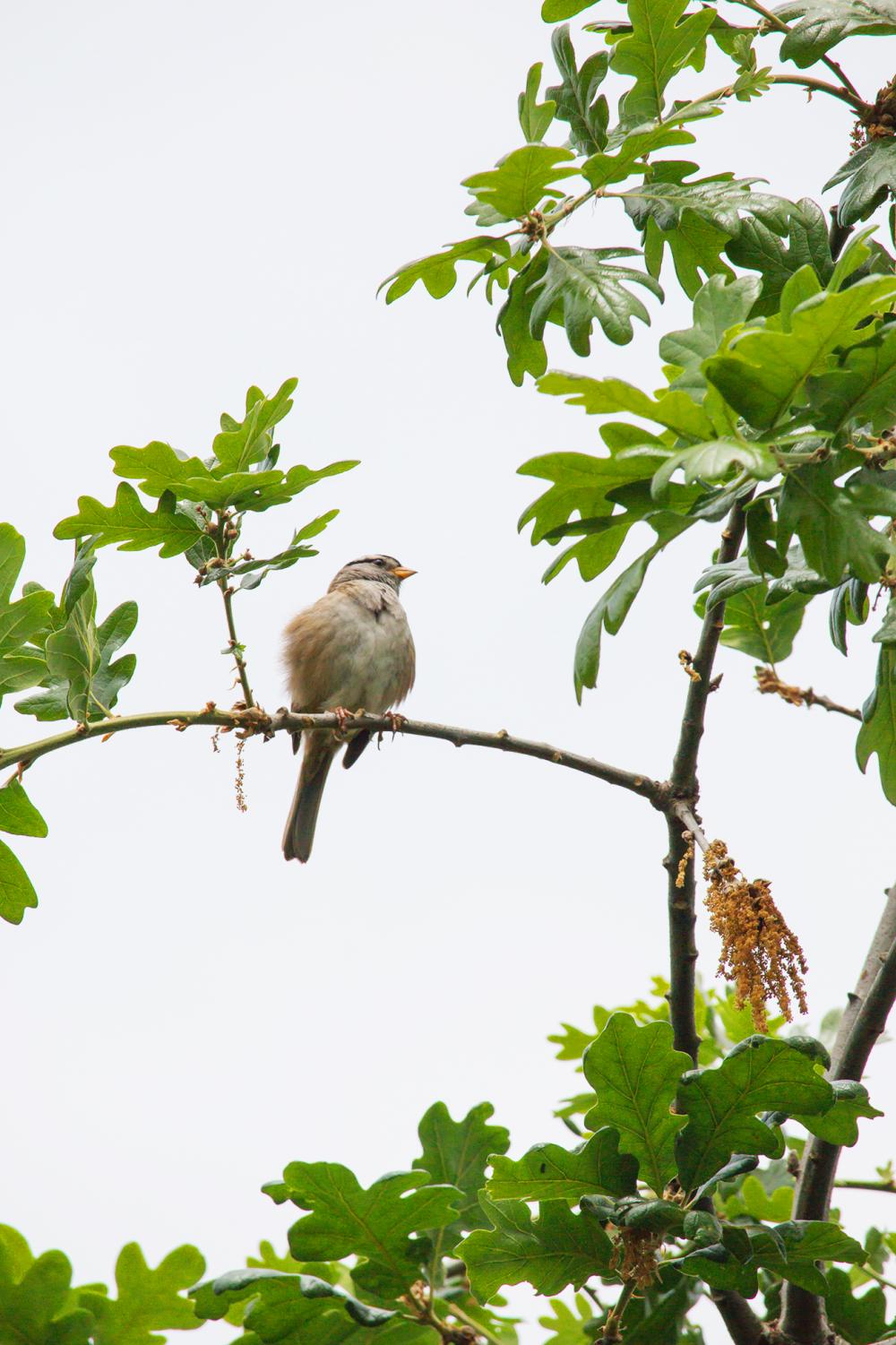
The bird habitat attracts birds of all kinds and is one of many landscaping projects coming to fruition around campus.
Some grant money also came from the Snohomish County Conservation District, but Syson credits the most important support to the school administration, “A lot of campuses won’t spend the money on new things like this,” said Syson, “You have to have an administration behind it.”
“Without the support of this administration, which would be our president, our vice president and our directors, none of this would happen without their support.”
And with this support, Syson hopes to expand the habitat, after the Index Hall is torn down this summer. The Index space is going to be used for more green space on the campus, and though Syson hopes to use some of it for the habitat, he’s not against the lawns. “Having a nice place for people to hang out on the lawn is a great thing,” said Syson. “I guess that’s a habitat for humans.”

What interests you about journalism?
I chose it at random. I was listening to an autobiography while I was driving to school and they mentioned...

What interests you about journalism?
I think what interests me most about journalism is the opportunity to learn about other people and to feel...

